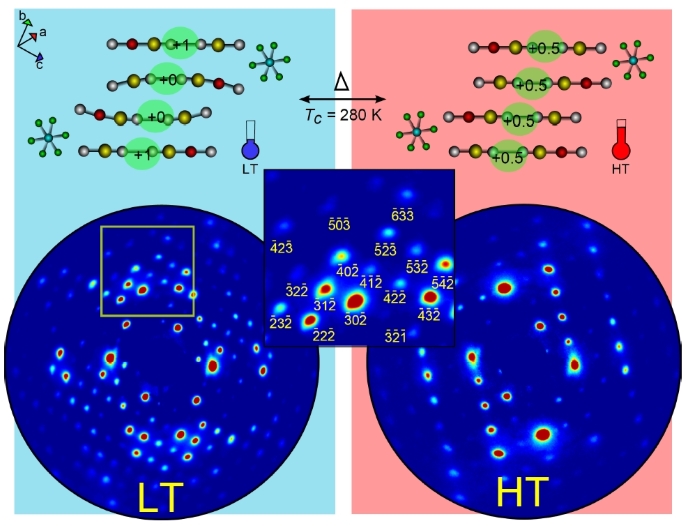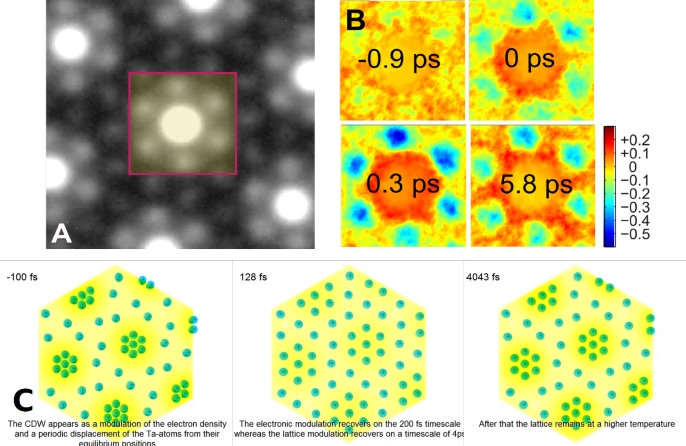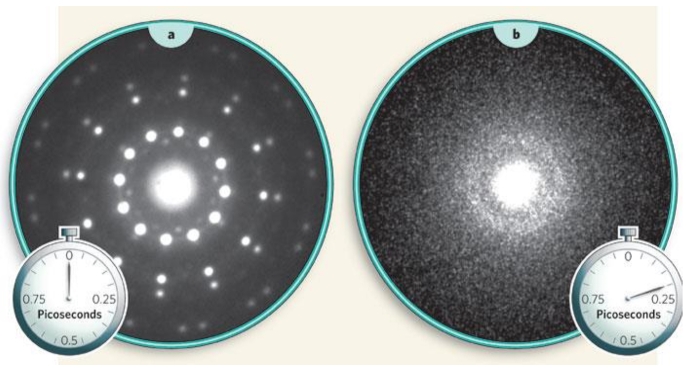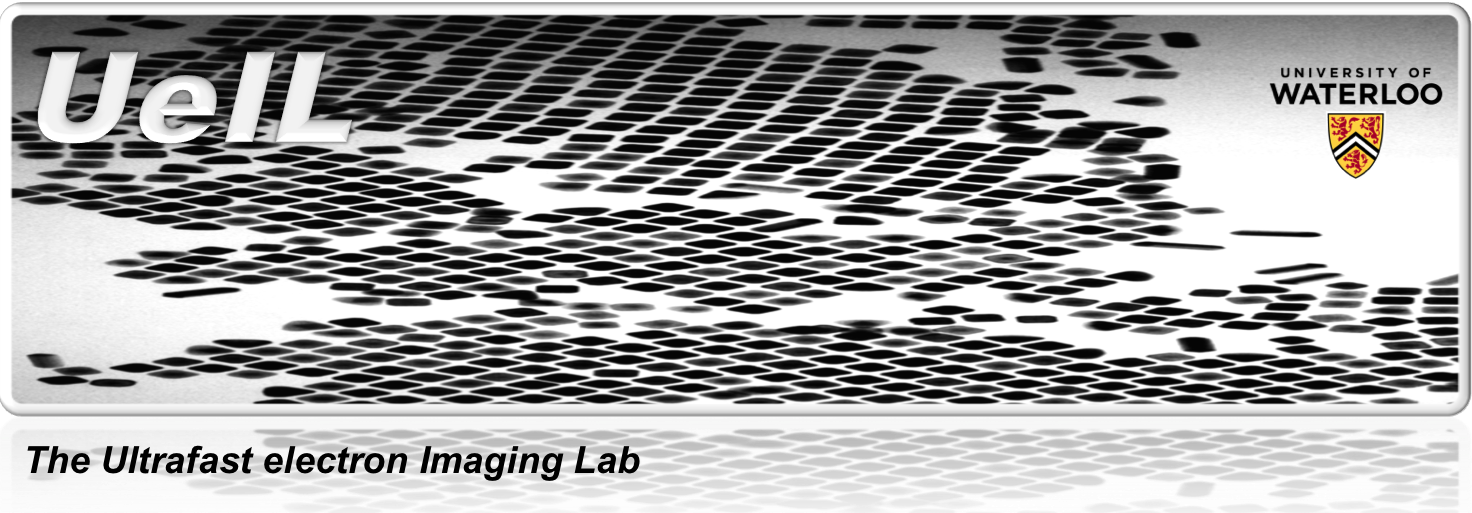1. Electron microscopy.
High-resolution electron microscopy of in-liquid samples.
We develop nanofluidic systems for electron microscopy studies of nanoparticles and bio-specimens in solution at room temperature. The following two videos show the growth and motion of nanoparticles in solution.
Cryogenic sample holders.
We develop sample holders to perform cryo-electron microscopy/tomography studies of frozen macromolecules and cells. Our innovative design features ultralow vibration levels at lower operating temperatures than commercially available products.

Time-Resolved electron microscopy.
Our group modifies high-resolution electron microscopes to make them suitable for ultrafast microscopy of biological samples. Presently, this research direction is under active development.
2. Femtosecond electron diffraction.
Strongly correlated electron-electron and electron-lattice materials.
In strongly correlated crystals a delicate balance among charge, spin and orbital ordering at the nanoscale give rise to rather unique quantum macroscopic properties such as high-temperature superconductivity, colossal magneto-resistance, ferro- and ferri-electricity.


Related publications (previous work at University of Toronto):

|
Charge localization and melting in a quasi one-dimensional organic conductor. We observed the key molecular motions responsible for hole delocalization during the insulator-to-metal phase transition in the organic charge-transfer salt (EDO-TTF)2PF6, Nature 496, 343 (2013) |

(A) Diffraction pattern before optical excitation(B) Relative intensity changes(C) Motion of Ta atoms in real space |
Charge density waves were first introduced (ca. 1930) by Rudolf Peierls when trying to explain superconductivity. We observed the suppression of the periodic superlattice distortion that follows optical photoexcitation. We can now access to both ultrafast structural and electronic order parameters to gain a better understanding of the coupling mechanism between these two sub-systems. Nature 468, 799 (2010) |

Diffraction patterns from bismuth before (a) and after thephotoexcitation (b). News&Views, Nature, 458, 42 (2009) byA. Cavalleri |
Speeded melting in bismuth. We observed the fastest order-to-disorder transition in a Peierls’ distorted system. The loss of crystallinity occurs on an unprecedentedly ultrashort timescale of 200 fs. Nature 458, 56 (2009) |
We are currently studying more complex strongly correlated systems trying to optically control materials properties and phase transitions.
Solution-phase structural dynamics.
The primary goal of this research line is to develop novel high throughput sample delivery methods for time-resolved electron diffraction of liquids and vacuum-sensitive specimens.
Structural determination of mass-selected molecular clusters.
The direct observation of hydrogen bond structures in water clusters still represents a major challenge due to the small size of nearly electron density free hydrogen atoms. We design state-of-the-art instrumentation that combines electron diffraction with mass spectrometry to gain access to the structure of small clusters of water and other molecules.
3. Femtosecond non-linear optical techniques.
Time-resolved Ultraviolet, Visible, Infrared, and Terahertz optical spectroscopies are implemented to study photoinduced electronic changes in crystalline and liquid-phase samples.
We would like to acknowledge the financial support provided by

We highly appreciate the contribution from the following companies

|
